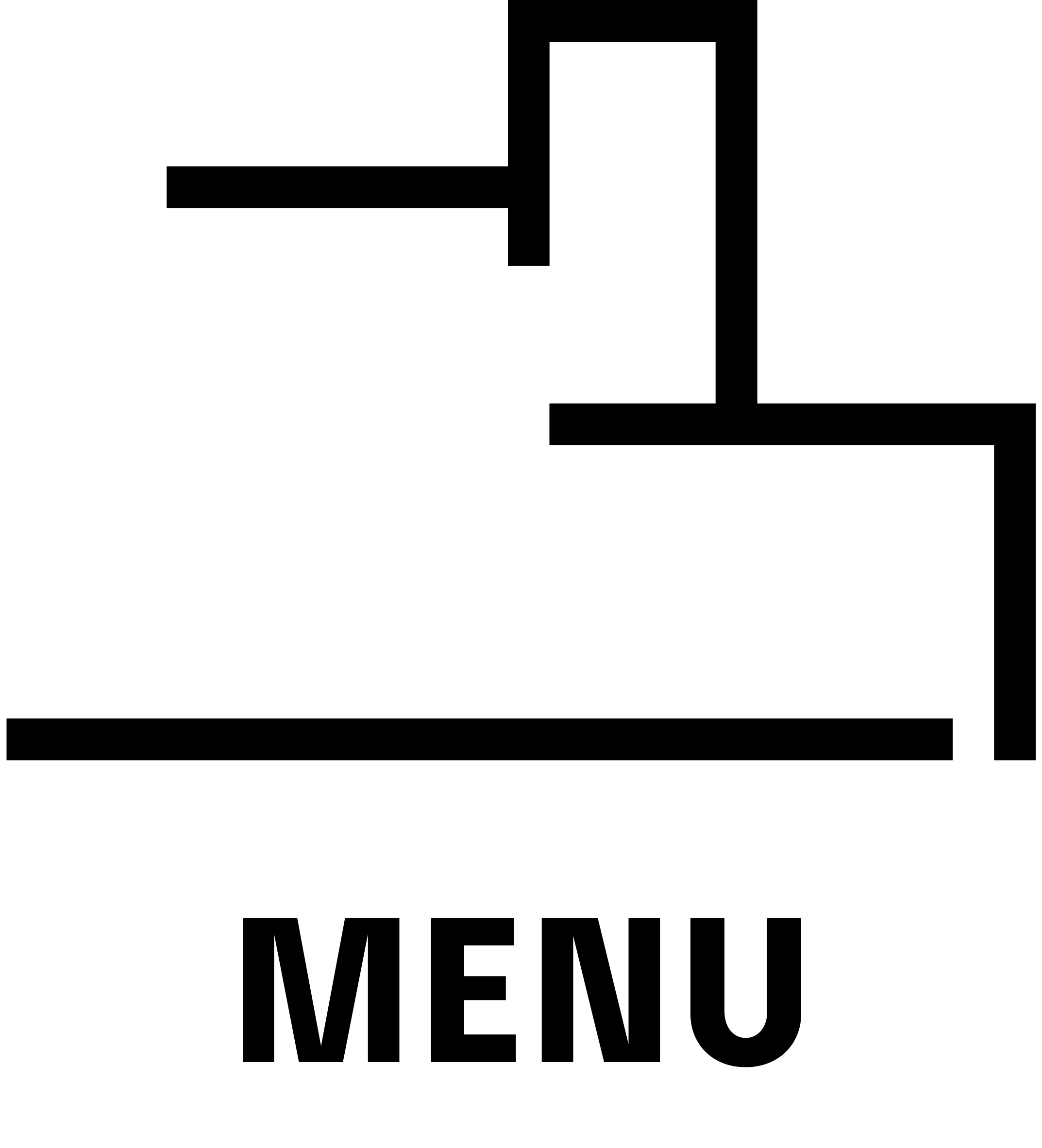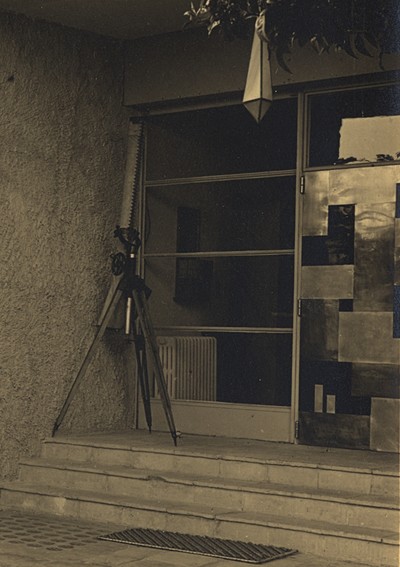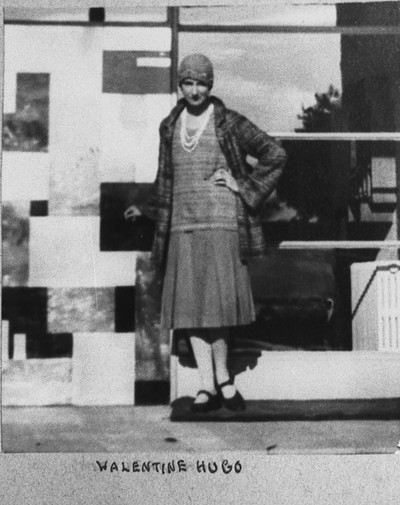Reconstruction of the metal marquetry entrance door by Claudius Linossier (1926), in collaboration with François Pouenat.
In 1924, Marcel L’Herbier’s film l’Inhumaine was released, for which Robert Mallet-Stevens created some of the sets. In particular, he imagined a modern architecture made up of superimposed geometric blocks and, using the same principle, a spectacular entrance door composed of interlocking panels, as in an abstract painting. This gesture was likely the starting point for the metallic composition adorning the entrance door to the villa Noailles, designed jointly by Mallet-Stevens and coppersmith Claudius Linossier between 1926 and 1927.
The correspondence between the architect, Linossier, and Charles de Noailles provides an insight into the creative process, with the three men going back and forth to decide on the final design. The motif selected was more complex than that of l’Inhumaine, and the variety of metals used created a more powerful decorative effect. The plates, affixed directly to the south-facing door, reflect sunlight and act as a signal. Their arrangement is clearly reminiscent of the architecture of the villa, with its right angles, clear lines, and concrete overhangs.
Claudius Linossier (1893-1953)
Claudius Linossier, a coppersmith, silversmith, and sculptor from Lyon, made a lasting mark on his craft by abandoning the curves of Art Nouveau in favour of stricter, more geometric motifs inspired by antiquity. He perfected his technique to the point of achieving, through research into acids and the development of a “fire patina,” subtle tones and colours comparable to paint and resistant to oxidation. Most of his work consists of vases, whose enduring success has earned him international recognition. There are few other examples of architectural decoration; in this respect, the door of the villa Noailles is as unique as it is precious.
Atelier François Pouenat
François Pouenat embodies the fifth generation of a family of metalworkers with a legacy spanning over 130 years. He inherited his father’s drawings and archives and continues his work in the fields of decorative arts and contemporary creation. He regularly works with artists, designers, and interior architects, blending traditional techniques with digital technology.


